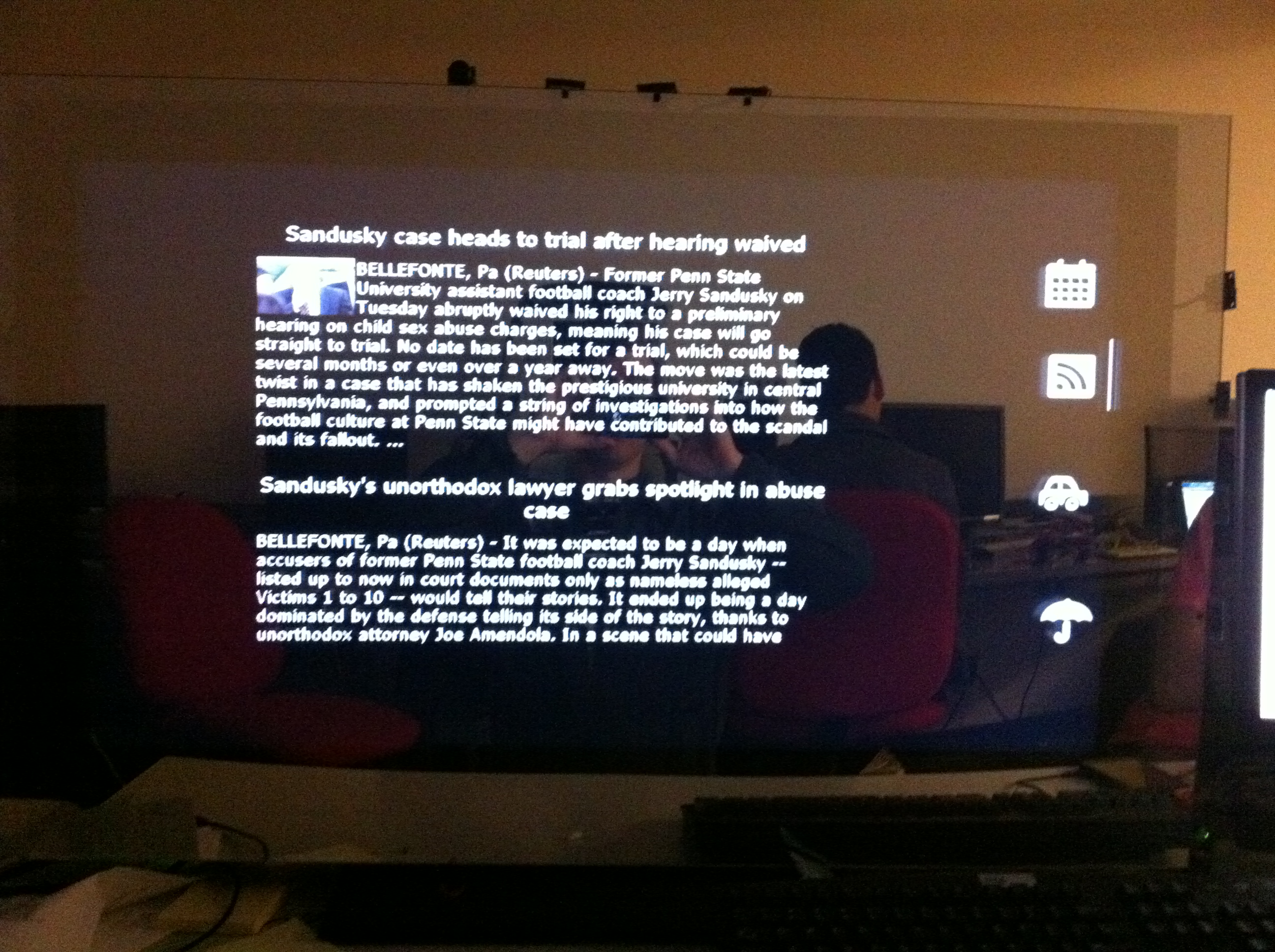
Recently a group of us were laughing about how we could mess with children by teaching them the wrong names for colors. Just buy a Stroop Effect novelty poster, and pretend that nothing is wrong. Since the effect is because the language center of the brain is being stimulated in a way that is incongruent with the visual stimulus it takes longer correctly name the color shown.
I then started to think about what would happen if you carried out the test with a bilingual person. Specifically, with people that are literate in languages that have completely different characters. I would think that if for example a monolingual speaker of language that used the Latin alphabet saw a word that was written with a completely different writing system, say Chinese, then the language center wouldn’t trigger since the character has no meaning to monolingual person. If the words were written in language that was sufficiently similar to the native language of the subject then the I would suspect that the language center would trigger and cause the effect, albeit at perhaps a lower intensity. Similarly, I suspect that the effect would have different intensities for someone that was bilingual, with the secondary language being less intense than the native language.
Sufficiently curious, I set out test my hypothesis. I quickly coded up a bilingual Stroop Effect viewer and grabbed the most convenient monolingual person and the most convenient bilingual person I have access to and tried it out. While my test wasn’t very rigorous, it did satisfy my curiosity for the evening.
The test was constructed so that the the subject was presented with eight colors (black, white, red, orange, yellow, green, purple, blue) in a random order in two rows of four. The color displayed were written in one of three different texts: language neutral squares, English, and simplified Chinese. The text was pulled from the name of the colors displayed. The text displayed in a random order and was guaranteed to not correctly correspond to the color it was written in. (e.g. The word “black” would never appear in the color black.) The subject advanced through each of the languages and as quickly and correctly as possible while saying aloud the color of the text each word appears in. Vocalization was to match the language the text was displayed in, or any language for the language neural text. Evaluation was conducted by comparing time to complete the task in each language, and expressing how difficult the task was in each language.
While I do know some words in Mandarin, and can read some Characters including those for the colors red and white, I used myself for the monolingual-monoscript subject. The language-free shapes and the Chinese characters were by far the easiest and were about equal in difficulty. Since I was going quickly, I didn’t really have time to determine whether or not each character was one that I might know, and if so what its meaning was.
I drafted Ming to serve as the bilingual-biscript subject. We both agreed that that there was an ordering in her time to complete and she said there was a definite ordering to the difficulty of the task. Again language neutral was the easiest, but for her English was the second easiest, and Chinese was the hardest. This makes sense because while she is literate in English and is very proficient in spoken English, her English is not at an equal level to her native Mandarin.
Looking online, I found two references to bilingual Stroop effect tests, but neither were exactly like the one I tried. Reading only the abstracts, it appears that Ardila et al. 2002 looked at the effect in English/Spanish bilingual and monolingual persons. They found that bilingual persons were slower at identifying colors than monolingual users. Okuniewska 2007 seems to contradict in the previous study by saying that there was “a bilingual advantage”, but that bilingual persons didn’t perform equally well in both languages. Both of these studies were bilingual-monoscript subjects, what changing the writing between languages does is isolate the shape-to-language path in the brain.
Personally, I find this experiment interesting, and it doesn’t seem like that it would take much to make this a proper experiment, but I wonder if anyone has actually done this test in psycholinguistics. I guess I need to ask around.
UPDATE: Sat Jul 14 11:20:15 PDT 2012:
I found a paper that closely mimics what I was trying to test, but not exactly. In 1978, Biederman and Tsao compared monolingual English speakers to bilingual Chinese speakers. They found that Chinese characters were harder to process than than Latin characters. The did not look at difference in textual representation, but rather simply referred to previous bilingual tests that used the Latin alphabet for both languages. They speculate that Chinese is harder to process for even native literate speakers since the characters do not carry any pronunciation information in them. While that is true, it seems like repeating this two alphabets would be needed to confirm.
Al-Ghatani et al. in 2010 created an Arabic Stroop test and applied it to bilingual subjects. Ten bilingual participants were given both an English and an Arabic version in order to measure the how similar the Arabic test is to the English test.
Ingraham et al. in 1988 created a Hebrew version of the Stroop test, but appears to have tested Hebrew.
Other related work:









